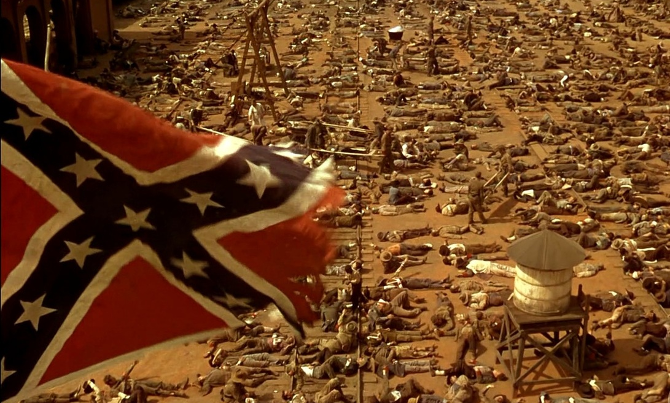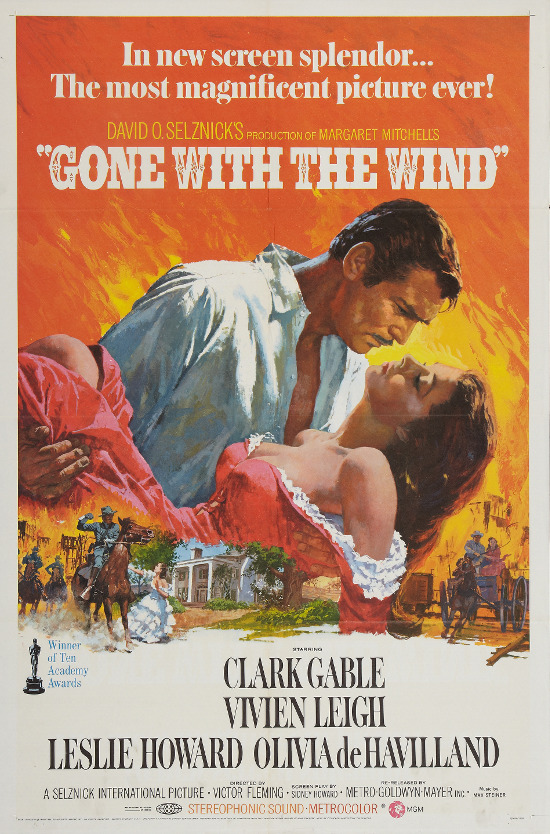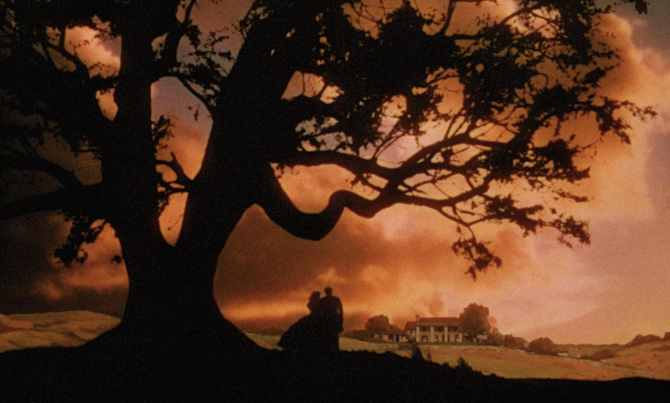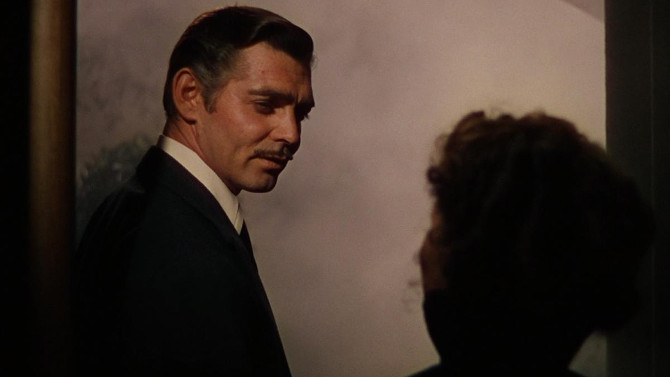It was lovely sitting down with veteran actor Michael Dante at Trekonderoga this past August. In the business for more than sixty years, it was not his original path in life. A top baseball player, he was signed by the Boston Braves out of high school.
As fate would have it, he travelled a less expected path, finding his way, through interesting circumstances, into his first feature film, Robert Wise’s Somebody Up There Likes Me, in 1956 (with legendary names like Newman, Duvall and McQueen). Leading to an impressive career, Dante has graced the silver screen in such films as Westbound, Seven Thieves (Edward G. Robinson, Rod Steiger, Joan Collins, Eli Wallach), Kid Galahad (Elvis), The Naked Kiss (with famed director Samuel Fuller), Apache Rifles, Willard, as well as playing the title character in Winterhawk. . . this is just a small sampling of his work.
His television resume must also be mentioned, as he has made appearances on well respected series like Maverick, Perry Mason, Bonanza, Get Smart, and, of course, Star Trek, taking on the role of Maab in the 1967 episode, “Friday’s Child”. A memorable character actor, versatile in his varied personas, ranging from a Blackfoot Chief and numerous cowboys, to safe crackers and tough guys, he has taken home many prestigious awards, including The Silver Spur (the Golden Globe of the Western Film and Television genre) as well as The Golden Boot (the Oscar of Westerns).
More than gracious with his time, Dante sat down with me at the Ticonderoga, New York located convention to discuss his intriguing life and career. With superlative stories about Tommy Dorsey, John Wayne, Steve McQueen, Clark Gable as well as so many other topics, it is a must watch. Make sure to check it out below.
And, as the interview approached its close, Dante recommended his favourite film, the 1939 classic drama Gone with the Wind, citing Clark Gable as “The King” – honouring his well known nickname. One of the all-time greats, Victor Fleming sweeps us off our feet and back in time, vividly depicting the American Civil War and Reconstruction Period by way of a torrid romance.
Though, that is just the beginning of the story. Fleming, who won Best Director at the Academy Awards, was not the original man behind the camera for this picture, it was actually famed filmmaker George Cukor (The Philadelphia Story; A Star is Born; My Fair Lady) who first got the job from obsessive producer David O. Selznick, who bought the rights to Margaret Mitchell’s thousand plus page novel in 1936, after he, and nearly every other executive in town, turned down buying the rights – Selznick reconsidered soon after saying no.
After only three weeks of work, Cukor was fired (though secretly continued to tutor the two female leads throughout), with The Wizard of Oz director Fleming (which was released the same year, no less) being brought in as his replacement. A stressful job to say the least, Selznick began to worry about his director while filming, writing, “We may soon have a serious worry. . . we should keep our worry confidential, but should be active on it none the less. I have for some time been worried that Fleming would not be able to finish the picture because of his physical condition. He told me frankly yesterday that he thought he was going to have to ask to be relieved immediately, but after talking with his doctor was told that it would be all right for him to continue. However, he is so near the breaking point both physically and mentally from sheer exhaustion that it would be a miracle, in my opinion, if he is able to shoot for another seven or eight weeks. . .”. Soon after, Fleming did have to bow out due to exhaustion, and Sam Wood (A Night at the Opera; The Pride of the Yankees; For Whom the Bell Tolls) tagged in for a few weeks while he recuperated. In the end, Cukor spent eighteen days on set, Fleming ninety-three, and Wood twenty-four. All of this highlights the magnitude and stress of a production like Gone with the Wind.
Thus, it is no surprise that adapting such a novel was a complex proposition as well. Sidney Howard was the first man tasked with trimming down the gargantuan tome. Unwilling to leave his farm in New England, Selznick turned to iconic scribe Ben Hecht (Scarface; His Girl Friday; Ride the Pink Horse, as well as several Hitchcock classics including Spellbound and Notorious) to fill the void left by Howard. At this time, Hecht, Selznick himself and Howard were working on the difficult task at hand (the original screenwriter returned to the job for one week – sadly, he would die in a freak tractor accident before the movie premiered. . . perhaps why he alone gets credited), trying to quickly polish it into shape. Hecht himself stated that for the week he worked on it, Selznick had them on task eighteen to twenty hours a day, not allowing them to eat lunch. . . salted bananas and peanuts were their only provisions. In the end, Hecht was credited with aiding with dialogue (John Van Druten had a smaller impact in this realm), while writer Jo Swerling contributed to the treatment, Oliver H.P. Garrett and Barbara Keon helped with screenplay construction. . . legendary novelist F. Scott Fitzgerald also worked on the project for nearly three weeks, though none of his additions made it to the screen. Selznick had a constantly revolving door with his writers, inviting them in, just to fire them at the first small misstep, driving himself to work on the screenplay for lengthy stretches (a known amphetamine user, this surely aided him in this intense venture).

In this scene, the sixteen hundred suffering soldiers were comprised of eight hundred extras and eight hundred dummies – partially due to a shortage of extras as several films were being done at the same time, it also saved the production money
An epic motion picture with fifteen hundred extras (some reports go as high as twenty-four hundred), it was vital to get the casting right – and they did just that. An inter-office communication from Selznick to Daniel T. O’Shea (secretary and manager of his studio) on January 4th, 1937, states: “One of our strongest possibilities for the lead in ‘Gone With The Wind’ is Errol Flynn. Myron is going to determine from Warner Brothers whether they would give us a picture a year with Flynn, if we gave him this lead. Please follow him up on this. For your confidential information, Cukor and I jointly feel that the choice is in the following order: 1. Gable. 2. Gary Cooper. 3. Errol Flynn. This so you may guide yourself accordingly.” Waiting two years for his first choice, he was able to procure his man – Gable, for the role of Rhett Butler. As for the female lead character, Scarlett O’Hara, Selznick desired an actress relatively unknown to the public eye, and after a long search, Vivien Leigh, arriving as the final screen tests had already been scheduled, was able to wow Selznick – making it to the last cut, along with Paulette Goddard, Jean Arthur and Joan Bennett. Shortly after the screen tests were completed, Leigh signed on to play the role – though she had experience acting in her native England, she was a relative unknown to American audiences. . . just what Selznick wanted. A clever touch, this story was covered up, with a tale circulated that Selznick randomly discovered his perfect actress at the last minute while they filmed the Atlanta fire sequences, an exclamation point to the lengthy search for the perfect actor for the part (which he used to build publicity while he raised the money to film the then second most expensive production of all-time – after Ben-Hur).
A final intriguing note finds Selznick writing to O’Shea once again, this time about the role of Ashley Wilkes. Shortened for your convenience, this provides a fascinating look into the mind’s eye of the power producer: “Confidentially, I think it extremely unlikely that we will find any Ashley that will be as satisfactory to me, or that any of the Ashleys that we are testing will prove on film to be as right, as Leslie Howard seems to be in my imagination. My worry about Howard is purely and simply concerning his age. . . Howard is an unusually intelligent actor, and I think that if it were explained to him that he would be leading with his chin as much as we would if he were not right pictorially for the part, and that I have not the slightest desire to give him an acting test, nor the slightest doubt as to his ability to give a great performance, but have simply the necessity, from his standpoint and my own, of making sure that he is right pictorially, Howard would make this test. I think further, that if he were told to make himself look as young and handsome as possible, with particular attention to his hair, he is an experienced enough producer and director himself to handle his own test for the purpose we have in mind. Levee [his agent] knows the importance of ‘GONE WITH THE WIND’ and of Ashley, and if he is any kind of agent at all, should break his neck to cooperate with us, particularly on behalf of a client who is anything but in demand at the moment and who needs something like Ashley to put him back into a position of prominence. . . I know that you will agree that there is nothing in connection with ‘GONE WITH THE WIND’ that is as much of a worry at the moment as the casting of Ashley – – not even the casting of Scarlett, because we have, after all, a few good Scarletts in reserve if necessary, but we haven’t one Ashley that I can really throw my hat in the air about.”
Beginning in Georgia in 1861, there is a romanticism in the Southern charm – gallantry, high society, the utter beauty of the landscape, all of which add to the vivid pastel-like quality of the picture. Like a work of brilliant nineteenth century art, the colours seep through the screen, transcendent of the medium.
Scarlett O’Hara (Leigh), living with her family on their cotton plantation, is a mischievous young woman, a tease and flirt with a stubborn streak running through her, feisty and full of life. In love with one Ashley Wilkes (Howard), he is a charming man from a wealthy home, the Twelve Oaks plantation, that sits just down the road.
Though Scarlett could have her choice of any man (every available suitor wrapped around her powerful finger), it is Ashley that she wants, despite the fact that he soon announces his engagement to his cousin, the slightly mousy Melanie Hamilton (Olivia de Havilland) – the sweetest, most caring yet equally fragile woman in the South. The type of woman who does not take kindly to such news, Scarlett does not give up on him, whilst marrying his younger brother Charles (Rand Brooks) out of spite. She also gets tangled up with Rhett Butler (Gable), a visitor from Charleston who has a shady reputation. . . cool, suave, and with an undeniable air, he is just as stubborn as Scarlett. With an uncaring demeanor (somewhat resembling Rick Blaine from Casablanca, the memorable character would grace the silver screen three years later), he seems uninterested in the feelings of others, only willing to save his own skin. . . and make some money in the process.
It does not take long for war to break out between the North and South, and all the good men head off to enlist. American is pitted against American in this heart-breaking affair. Fathers, brothers, and sons die on the hellish battlefield (many of those we have known in the films beautiful opening), yet even those unscathed are not left untouched.
With a burning desire still searing in her heart, Scarlett pines for Ashley, even while she befriends Melanie, now sisters-in-law after the two marriages are rushed into existence just prior to their husbands leaving for war. They spend their time doing their duties, raising money for the cause and aiding those wounded during the war.
In one of the most powerful sequences in the first half of the feature, the pair, stranded in Atlanta as the Union bombards the city, (with Melanie weakened after having just had her first child), must escape as it burns. The first scene filmed, (on December 10th, 1938), was such an expensive production that, if it went wrong, the whole movie could have gone up in flames with it. Wholly real, the creative team utilized old sets, most notably 1936’s The Garden of Allah and the ‘Great Wall’ from 1933’s King Kong as stand ins for the grand old city. So intense and bright were the flames that the phone lines were bombarded by calls from local residents in Culver City, believing MGM was actually burning to the ground. A mind-boggling sequence that still stands the test of time – as eerily alluring and horrific as it was back in 1939.
A key piece of dialogue uttered by Scarlett, “As God is my witness, as God is my witness, they’re not going to lick me. I’m going to live through this and when it’s all over, I’ll never be hungry again. No, nor any of my folk. If I have to lie, steal, cheat or kill. As God is my witness, I’ll never be hungry again.”, it speaks true to her character and perspective, a woman driven to succeed at all costs. Money is what powers her, and nothing will get in her way, no matter how it affects her life, or those around her.
Most of the second section revolves around The Reconstruction, the difficult times ahead for those left to pick up the pieces under the new rules and taxes of the North. It is in this changing landscape that we see the drama deepen, relationships made and broken, death rearing its ugly head more than once in the lives of these characters we have followed for so many years.
And, it all seems to be leading to that ‘oh so famous’ line, one of the grandest and well known by young and old. . . “Frankly my dear, I don’t give a damn”. With an urban legend so rich growing around it, it has long been said that Selznick had to pay a five thousand dollar fine in order to use the word ‘damn’ instead of darn, as it was denied under the oft termed Hays Code. Such a perfect tale, it somehow feels right that this troubled production had one last hurtle, but alas, it is not so. Selznick did fight long and hard to make sure that the dialogue stayed true to the original novel – thought the Production Code was not something you could throw some money at to make it go away. By putting pressure on Hays, and adding the word ‘frankly’ to soften the wallop, he eventually won, though, in the end the rule was changed one month prior to the film’s release, meaning that the word fit within the new parameters of the Code, making the whole thing a moot point.
With some of the most beautifully lit shots found in a colour production, Gone with the Wind is a masterwork of shadow and light. Silhouettes, film noir-esque barring, and other such features add substance to each shot, depth to match the near four hour epic. Like the drama that revolved around other areas of the production, cinematography was no different. Lee Garmes worked for a month on the project (approximately the first third of the film), though Selznick and his team saw the footage as ‘too dark’ and replaced him with Ernest Haller, who worked alongside Technicolor cinematographer Ray Rennahan.
With a superlative cast, to say the least, each actor brings a certain magic to their respective persona. Though the piece is centred upon Gable and Leigh, two of the legends of the industry (and both majestic here, Gable at his most regal, a manly man with a twinkle in his eye, and Leigh a sultry go getter, though still porting herself, at least publically, within the restraints of the era), performances from the likes of Hattie McDaniel (as the O’Hara’s housemaid Mammy, McDaniel brought a wise, sage-like perspective to the family, an outspoken yet respected voice in the household), de Havilland (a big hearted, thoughtful soul, despite her much more fragile frame), Howard (the loyal yet torn male driven by honour, who truly loves his wife, though is constantly being seduced by Scarlett), Evelyn Keyes (as Scarlett’s sister Suellen), Alicia Rhett (as Ashley’s unmarried sister India), each add depth to the rivetting narrative. . . and remember, this is just the beginning of a long list of stellar performances.
Capping the picture is an equally epic score, written by Max Steiner. Matching the narrative beat for beat, it was one of twelve films Steiner composed in 1939, and he only had three months to work on the project – producing nearly three hours of music for the motion picture. With many twenty hour days, he, similar to Selznick, turned to Benzedrine to stay awake.
Despite all of the upheaval that came with so many changes while filming, it is quite a miracle when one considers just how seamless Gone with the Wind is. If adjusted for inflation, Gone with the Wind would still be the top grossing picture of all-time, earning a little over 3.4 billion dollars. Partially thanks to it being re-released six times, each release brought with it huge success, only growing its legend. A spectacle that today would be somewhat akin to Titanic, Avatar, or Star Wars, it also took home eight Oscars, as well as an honorary and technical achievement award – for ‘outstanding achievement in the use of color for the enhancement of dramatic mood in the production of Gone With The Wind (plaque)’ (William Cameron Menzies) and ‘for pioneering in the use of coordinated equipment in the production Gone With The Wind’ (R.D. Musgrave). All in all, it won Best Picture (the first colour film to receive the honour), Film Editing (Hal C. Kern and James E. Newcom), Art Direction (Lyle R. Wheeler), Best Cinematography – Color (Ernest Haller and Ray Rennahan), Best Writing – Screenplay (the first posthumous Oscar to Sidney Howard), Best Director (Fleming), Best Actress in a Supporting Role (Hattie McDaniel was the first African American to be nominated and win an Oscar), and Best Actress in a Leading Role (Leigh’s first of two statuettes).
It must also be mentioned that this romanticized version of the South provides a less than authentic depiction of the African American plight. A vision from the Southern perspective, this is to be expected, and despite those complaints, it did provide a positive spotlight with McDaniel’s Oscar win.

An iconic poster from ‘Gone with the Wind’ used in many of the re-releases (including 1967), though not used upon its original release
Finding a place in what has been called the greatest year ever for films, it is hard to argue with the quality of this specific year when it comes to the annals of motion picture history – staggeringly, Americans bought eighty million movie tickets per week over the course of 1939. To provide you with a short list of those that join this wondrous epic, Mr. Smith Goes to Washington, Gunga Din, Stagecoach, Ninotchka, The Hunchback of Notre Dame, Of Mice and Men, Wuthering Heights, Dark Victory, At the Circus, The Adventures of Sherlock Holmes (as well as The Hound of the Baskervilles) and the above mentioned The Wizard of Oz, all were released in the same year. Stars like Gable, Olivier, Rooney, Stewart, Davis, Garbo, Rains, de Havilland, Dunne, Meredith, Chaney, Jr., Wayne, Garland and Niven were at the top of their game – none of which need a first name to know who they are. I am sure you get the idea.
Melodramatic in a good way, Gone with the Wind is, simply put, a spectacle. Hope and honour, disillusionment and disappointment, love and loss, romance and heartbreak all play an integral part in this sweeping epic of yesteryear. Encompassing all that is expected from classic Hollywood, it is an utterly grand experience, featuring larger than life stars, arresting Technicolor, powerful moments, realistic sets, brilliant costumes (by Walter Plunkett) and a story that reverberates through the ages. At the beginning of the film, the written prologue reads, “There was a land of Cavaliers and Cotton Fields called The Old South. . . Here in this pretty world Gallantry took its last bow. . . Here was the last ever to be seen of Knights and their ladies fair, of Master and of Slave. . . Look for it only in books for it is no more than a dream remembered. A Civilization gone with the wind.”. . . thankfully, due to this masterpiece, that statement is not true, and if one thing is clear, this film still resonates, and will never be gone with the wind.





Lots of information about a fantastic movie. I loved watching it at the theatre. You felt like you were right there. A true masterpiece. Great article, it takes me back!
GREAT review nik. As I told you, I caught the first half the other night and it never grows old – as you wrote, an excellent movie in every respect. Spectacular! Also I actually read the whole novel many years ago and it is a true classic, not just an historical romance. The movie does the book honour – equally good. Thanks for such an excellent review – so enjoyable